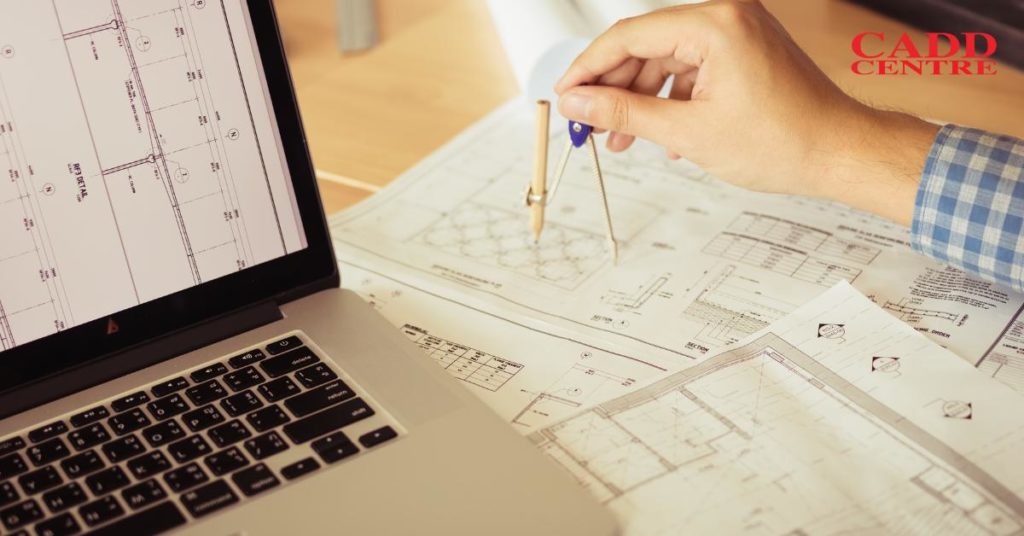Life Before AutoCAD: A Journey From Tedious to Technological Transformation
Life before AutoCAD was very tedious. Engineers and architects that worked on engineering designs had to draw the complete design manually on paper before they were finalized. If you refer to any engineering design from the past, you will find sketches drafted on paper with tools. Designers at that time used big rulers and set squares to construct architectural designs.
The Need for Technological Innovation
The challenges posed by manual design were evident to all. This method was
- Challenges of Manual Design:
- Manual design limitations were widely recognized.
- Changes necessitated a complete redesign from scratch.
- These constraints hindered creativity and efficiency.
- A more adaptable approach was needed.
- Time-Consuming and Tedious Process:
- Creating designs on paper was labor-intensive.
- Accurately representing the final output was challenging.
- Emergence of CAD Software:
- CAD software addressed these challenges.
- Technology allowed for flexible design modifications.
- Prior to CAD, altering drawings on paper was impractical.
- AutoCAD Revolution:
- AutoCAD was developed to streamline design processes.
- It provided a solution to the limitations of manual design.
This was the reason CAD software came up. Technology also enabled designers to change the drawings as needed which was otherwise impossible on paper. If the designs had to be changed, the architects had to start all over again to put them on paper. Keeping all these challenges in mind, soon, the software tool for designing AutoCAD was developed.
Enter AutoCAD: A Revolution in Design
AutoCAD has revolutionized the way in which designs are created today. AutoCAD makes the design process much easier by getting rid of tedious paperwork and shifting everything to technology.
The element of efficiency has also witnessed a huge rise in the graph. Technology has enabled more accurate designs that are easy to update as per the requirements.
The Integration of Designs
Before the concept of AutoCAD for Electrical Design reached the market, designing was completed in segments. Designers generated designs in parts and integrated them at the end, this resulted in errors and rework. AutoCAD made the integration of the final design more convenient and simple.
Now designers have different tools to design these segments using powerful AutoCAD tools. Designs that are generated through AutoCAD are also more accurate and consistent.
The Power of AutoCAD Algorithms
The sophisticated algorithms of AutoCAD for architects are greatly helping to generate designs smoothly. Its design technology is also under constant updates to meet high standards and facilitate ease in the design process.
In addition, the tool gained huge popularity because of its ability to communicate the designs through multiple data output streams. This feature of interoperability is anticipated to rise above the current levels in the near future to truly achieve design outcomes that support the process to generate the final design.
Streamlining Design Decisions
Design decisions that involved multiple feedbacks and redesigning steps were a big challenge before AutoCAD. The software reduced the response and redesign time to ensure important design decisions are made early to coordinate and boost the design performance.
Explore the World of AutoCAD
To delve deeper into the realm of AutoCAD and establish yourself in the field of design, consider enrolling in professional AutoCAD courses offered by the CADD Centre. Certification from this renowned institution can accelerate your career path, making you a sought-after professional in the global design arena.
Conclusion
In retrospect, life before AutoCAD was characterized by laborious, time-consuming processes that posed significant challenges to engineers and architects. The advent of AutoCAD, with its digital prowess and efficiency, transformed the design landscape, making it more accessible, precise, and adaptable than ever before.
This technological evolution continues to shape the world of engineering and architecture, promising a future where design outcomes surpass current levels of excellence.
Frequently Asked Questions (FAQs)
1. What is AutoCAD, and how has it revolutionized the design industry? AutoCAD is a software tool that has transformed the engineering and architectural design process by eliminating manual, time-consuming tasks and enabling greater precision and flexibility in design.
2. How did engineers and architects create designs before AutoCAD? Before AutoCAD, engineers and architects had to draw designs manually on paper using tools like rulers and set squares, resulting in a slow and error-prone process.
3. What challenges did designers face in integrating designs before AutoCAD? Designers often encountered challenges in integrating designs before AutoCAD, leading to errors and rework due to the segmented nature of the design process.
4. How does AutoCAD streamline design decisions and improve coordination? AutoCAD reduces response and redesign times, allowing for more efficient design decisions and better coordination among team members, resulting in improved design performance.
5. Where can I learn more about AutoCAD and advance my career in design? To gain expertise in AutoCAD and excel in the field of design, consider enrolling in professional AutoCAD courses offered by the CADD Centre, a globally recognized institution.





